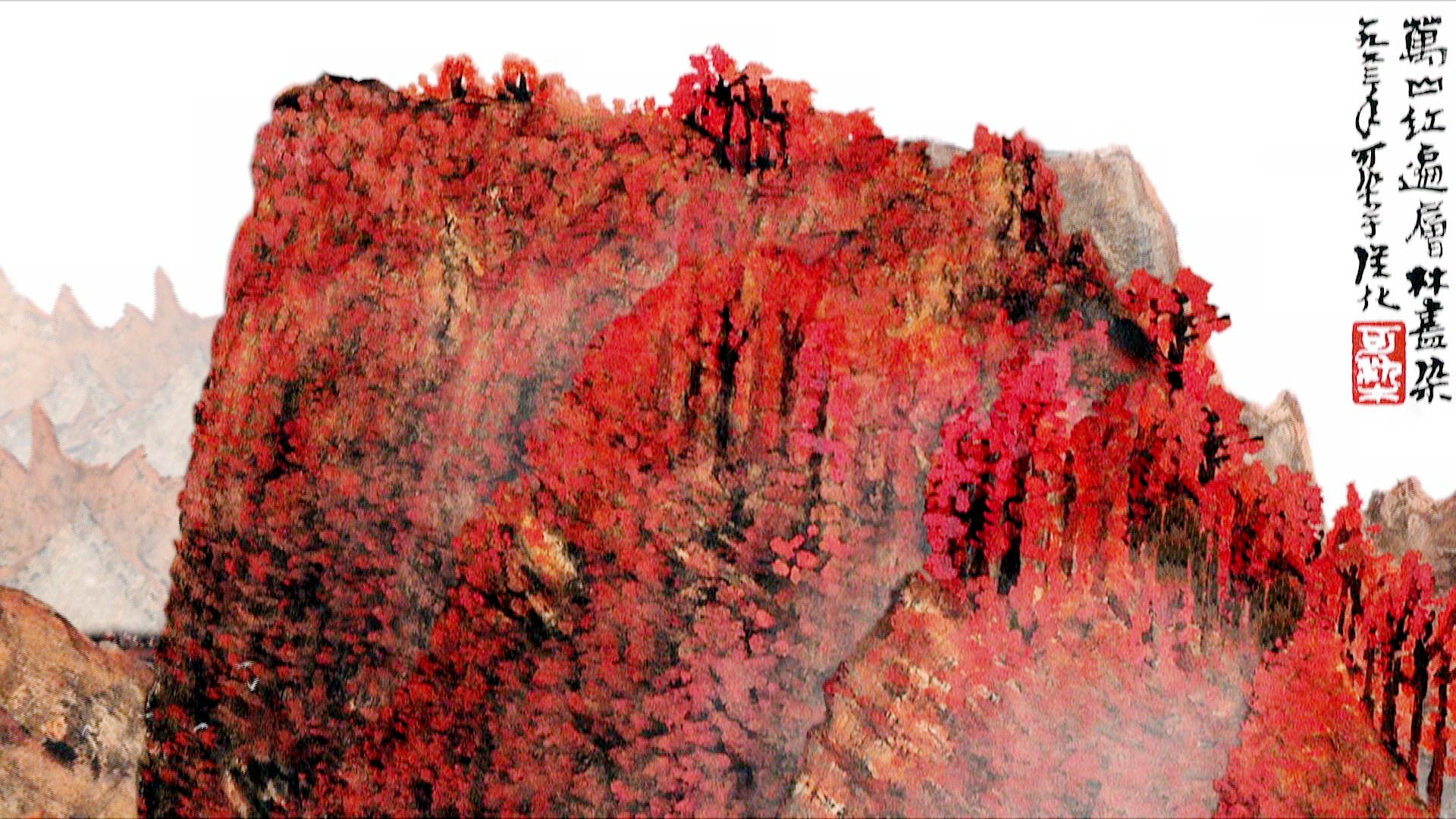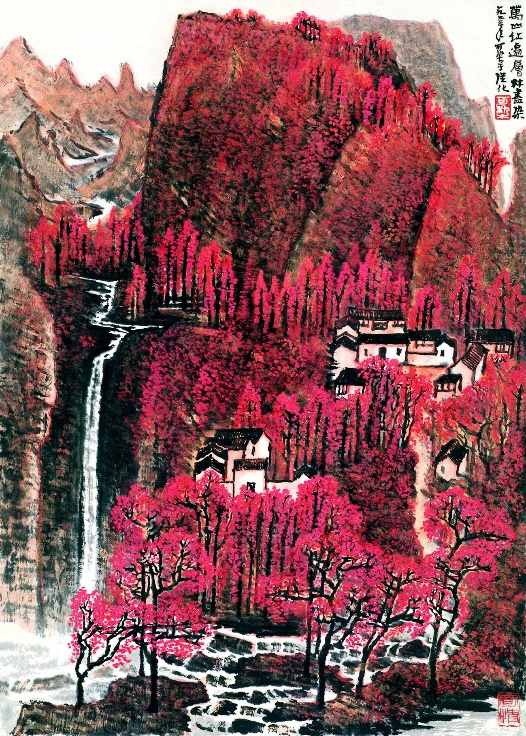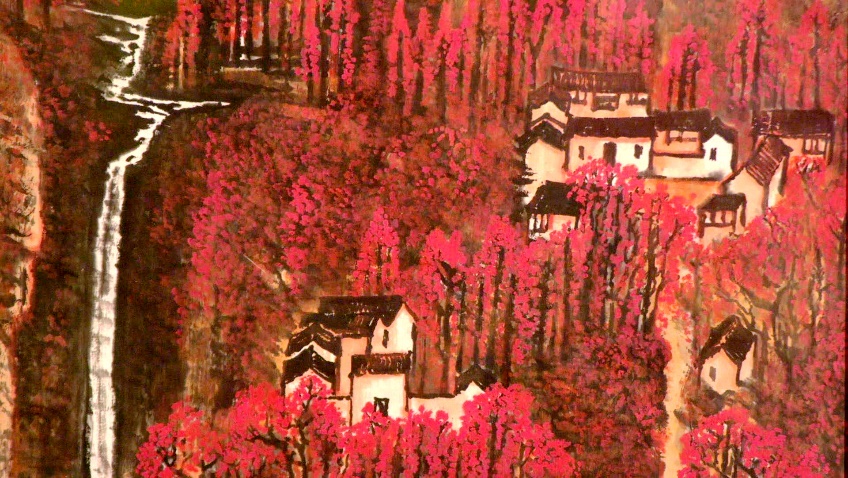
Details of "Ten Thousand Mountains Bathed in Red" by Li Keran. /CGTN
Details of "Ten Thousand Mountains Bathed in Red" by Li Keran. /CGTN
Red is probably the favorite color in the hearts of Chinese people. In Chinese culture, red usually means something vigorous, enthusiastic, inspiring or auspicious. It's also a common color in classical paintings.
The famous painting "Ten Thousand Mountains Bathed in Red" is a representative series work in the case. Created by Chinese artist Li Keran, the artwork opened a new chapter in the use of red in Chinese landscape paintings.
The documentary series "Fine Arts in China" produced by China Media Group revives the real situation of the classic painting, vividly presenting the stunning late autumn scenery of south China and immersing spectators in its magnificent red foliage.

"Ten Thousand Mountains Bathed in Red" by Li Keran. /CGTN
"Ten Thousand Mountains Bathed in Red" by Li Keran. /CGTN
"Ten Thousand Mountains Bathed in Red," shown in the video, is the second of seven landscape paintings – all showing different scenery under one title – which Li Keran created between 1962 and 1964.
This body of work, inspired by a poem written by Chairman Mao Zedong, depicts an autumn scene featuring mountains, forests, waterfalls, streams and people's homes. In 1963, after visiting many scenic spots around China, the artist chose to use vermilion pigment for his masterpiece, portraying the towering aspirations of the country.
The scene depicted in the painting is a larch forest in Guangdong. In the picture, the mountain stands like a proud monument in the midst of varying hues of red, while the rich crimson permeating the dense woods offers an apt backdrop for all the creatures striving freely under the heavens.
Meanwhile, a clear mountain stream meanders across the land, flowing and burbling in a graceful arc around the human dwellings.
In traditional landscape works, the natural world was imbued with either a sense of ease and clarity or marked by an imposing grandeur and gravity. This work, however, used meticulously layered ink wash paint to show the volume of the mountains.
The application of shifting textures then sculpted the autumnal forests like a bas-relief. In addition, the painter reproduced the poetic art world of southern China with the contrasting red and black – the overpowering red soon etching itself into the minds of viewers.

Details of "Ten Thousand Mountains Bathed in Red" by Li Keran. /CGTN
Details of "Ten Thousand Mountains Bathed in Red" by Li Keran. /CGTN
Drawing directly from the natural world was the ambitious goal of Li Keran in his bid to renew Chinese painting. Over many years he explored a fresh sense of spirit and soul to underpin China's art tradition in this new era. In the 1950s, China's traditional fine arts were riding high, as its many practitioners tried to adapt and improve on these time-honored techniques.
Li ranked among these pioneering artists, as he saw painting scenes from real life as a gateway to the transformation of China's fine arts. He believed the artist must venture deeply into the natural world and merge their character with that of their era.

Chinese master artist Li Keran. /CGTN
Chinese master artist Li Keran. /CGTN
The painting master once wrote: "I follow no traditional formulas, but I am faithful in tradition." The magnificent landscapes inspired his brushstrokes and revealed to him the limitations of traditional techniques.
During this transitional period, Li's works presented a distinct combination of the styles of Chinese old masters and other modern approaches he learned.
The merged syntax of Chinese and Western fine arts offered an exciting path for him in his efforts to blaze a new trail for China's landscape painting.
As some fine arts pundits noted, the success of "Ten Thousand Mountains Bathed in Red" resides not only in its original use of the color red, but also in its impressive formal beauty.
Equally, if not more important, it embodies a spiritual depth and vastness. That's how the image seems to immerse viewers in these towering peaks bathed in flaming red foliage.

